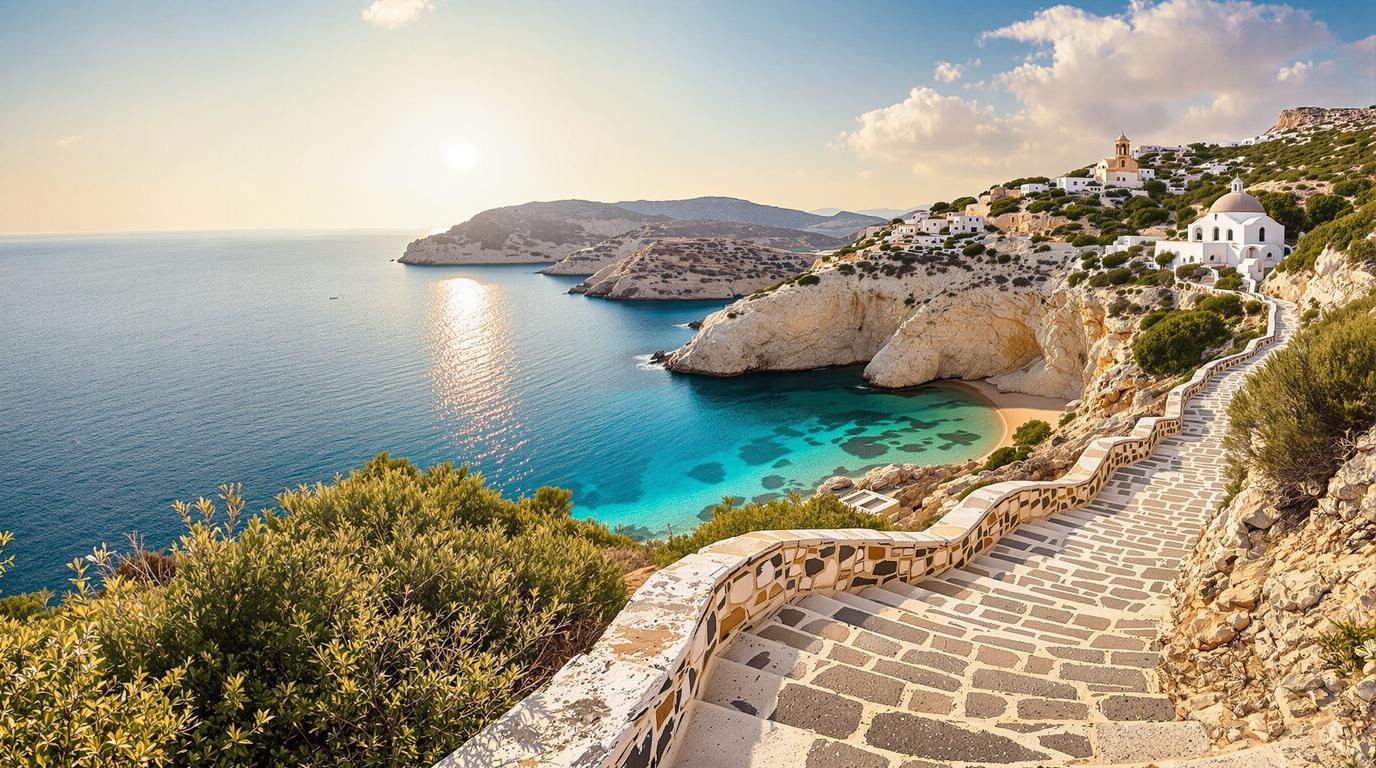Walking across Andros Island feels like stepping through a time portal where ancient Greek footpaths meet pristine secluded beaches. This verdant Cycladic gem hosts over 180 kilometers of meticulously maintained trails – stone-paved paths that have connected island villages for centuries, now drawing hiking enthusiasts seeking authenticity away from Greece’s more crowded islands.
The island where myths walk alongside hikers
Andros isn’t just another pretty Greek island. Its extensive network of ancient trails – some dating back thousands of years – creates a hiker’s paradise unlike anywhere else in the Cyclades. These paths once served as vital arteries connecting mountain villages when sea travel proved dangerous or impractical.
The crown jewel of this network is the acclaimed Andros Route, a 100km trail recognized with the prestigious “Leading Quality Trail” designation by the European Ramblers’ Association. This multi-day trek takes you through landscapes that shift dramatically from coastal panoramas to mountain vistas within a single day’s journey.
“We’ve maintained these paths exactly as our ancestors built them – stone by stone, without cement or modern materials,” explains Dimitris, a volunteer with Andros Routes, the organization preserving these historical treasures.
Hidden beaches that reward the adventurous
Andros offers something increasingly rare in the Mediterranean: genuinely secluded beaches accessible only by foot or boat. Achla Beach might be the most spectacular, where a freshwater river meets turquoise Aegean waters beneath a canopy of plane trees. The three-hour hike to reach it keeps crowds at bay even during peak summer months.
For those seeking aquamarine waters with less exertion, Zorkos Beach can be accessed via a rugged dirt road. Its golden sand and snorkeling-worthy waters rival more famous Greek destinations but without the accompanying crowds.
The ancient capital beneath the waves
Following Trail 9a brings you to Palaiopolis, Andros’ ancient capital. Here, history enthusiasts can explore ruins while imagining the sunken harbor that once made this a powerful maritime center. Parts of the ancient port now rest beneath the Aegean, visible to snorkelers on calm days.
This archaeological site offers a fascinating glimpse into ancient Greek life, much like other hidden historical sites across the Mediterranean.
A waterfall oasis in the Aegean
The Pithara Waterfalls present a surprising contrast to typical Cycladic landscapes. A short 30-minute hike from Apikia village leads to these refreshing cascades nestled within a verdant valley. The cool, crystal-clear pools offer welcome relief during summer months, creating an experience more reminiscent of mainland Europe than a Greek island.
“Tourists come expecting only beaches and white houses,” says Maria, who runs a small taverna in Apikia. “They’re always shocked to discover our lush valleys and waterfalls. Andros isn’t like the postcards of Mykonos or Santorini.”
Practical wanderings
For the optimal Andros experience, base yourself in either Gavrio (the port town), Batsi (for amenities and swimming), or historic Chora with its marble-paved streets. April through June offers ideal hiking weather before summer heat intensifies, while September provides warm seas with fewer visitors.
After hiking ancient paths, refuel with local delicacies like froutalia (herb omelet) or amygdalota (almond cookies) that provide authentic tastes of regional culinary heritage.
As you traverse these ancient trails connecting whitewashed villages and discover beaches accessible only to those willing to venture beyond the ordinary, you’ll understand why Andros represents the Greece that locals hope visitors will discover – one where authentic traditions remain alive and natural beauty still reigns supreme, much like other preserved cultural treasures across the globe.
